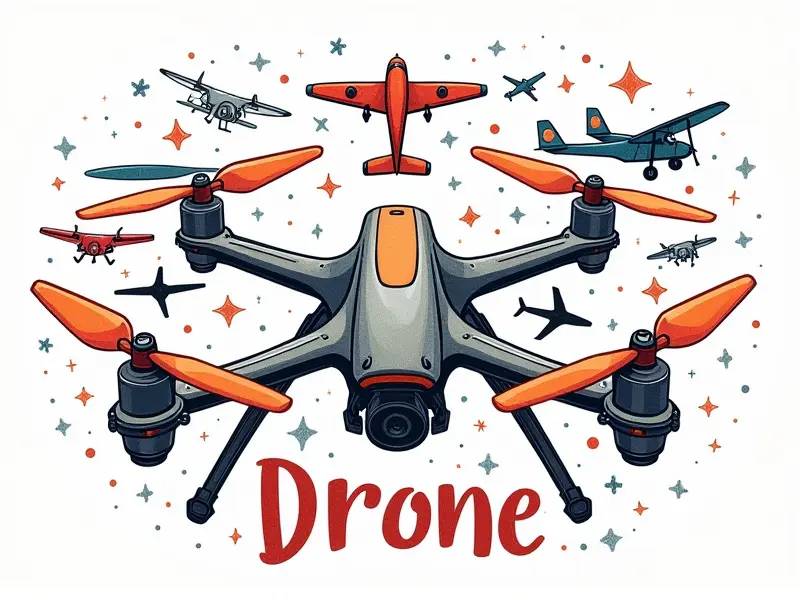How to crash a drone safely

How to Crash a Drone Safely
Drone flying can be an exhilarating hobby or professional pursuit, but it comes with its fair share of risks. One such risk is the potential for crashes that could damage your drone or even cause injury. This article aims to provide comprehensive guidance on how to crash a drone safely and minimize any potential damage.
How to Land a Drone Safely Without Crashing
Landing a drone safely without crashing requires careful planning and execution:
- Choose the Right Location: Ensure you land in an open area free of obstacles, such as trees or power lines.
- Monitor Battery Levels: Keep an eye on your battery levels to avoid running out of power mid-flight.
- Use GPS Lock: Utilize the GPS lock feature for a stable and controlled landing.
Preventing Drone Crashes: Tips and Tricks
To prevent drone crashes, follow these tips:
- Regular Maintenance: Keep your drone well-maintained with regular checks on propellers, motors, and batteries.
- Avoid High Winds: Strong winds can destabilize the drone; avoid flying in such conditions.
- Check Flight Logs: Review flight logs to identify patterns or issues that could lead to crashes.
Safe Drone Landing Techniques for Beginners
New pilots should focus on mastering these landing techniques:
- Practice Landings in Open Spaces: Start with open fields and gradually move to more challenging areas.
- Use Altitude Hold Mode: This mode keeps the drone at a constant altitude, making landings easier and safer.
- Landing Gear: Use landing gear designed for soft landings and reduce impact forces.
Avoiding Common Drone Crash Scenarios
To avoid common crash scenarios, be aware of the following risks:
- Low Battery: Always monitor battery levels to prevent unexpected shutdowns mid-flight.
- Navigational Errors: Use GPS and visual aids to navigate accurately and avoid obstacles.
- Sudden Weather Changes: Be prepared for sudden weather changes that can affect flight stability.
Recovering from Drone Crashes with Minimal Damage
If a crash does occur, follow these steps to minimize damage:
- Inspect the Drone Immediately: Check for any visible damage or loose parts before attempting flight again.
- Document the Crash: Take photos and videos of the crash site for insurance claims and future reference.
- Contact Support: Reach out to your drone manufacturer's support team if you need assistance with repairs.
Essential Gear to Protect Your Drone During Crashes
The following gear can help protect your drone during crashes:
- Landing Skids: Rubber landing skids absorb impact and reduce damage upon landing.
- Propeller Guards: Propeller guards prevent propellers from breaking or damaging other objects.
- Dronesuits: Dronesuits are protective suits that encase the drone, providing a cushioning effect during crashes.
Learning from Drone Crashes: A Guide
Crashes can be valuable learning experiences if you approach them correctly:
- Analyze Crash Data: Use flight logs and telemetry data to understand the cause of the crash.
- Review Flight Techniques: Assess your flying techniques and identify areas for improvement.
- Seek Feedback from Peers: Discuss your experiences with other drone pilots to gain insights and advice.
Safe Drone Flying Practices to Avoid Crashes
To avoid crashes, adhere to these safe flying practices:
- Familiarize Yourself with Regulations: Know the local regulations regarding drone usage in your area.
- Practice Regularly: The more you fly, the better you become at handling unexpected situations.
- Stay Informed About Technology: Keep up-to-date with new technologies and features that enhance flight safety.
Minimizing Drone Damage During Forced Landings
In scenarios where a forced landing is necessary, follow these steps to minimize damage:
- Select the Softest Landing Spot: Aim for grassy areas or soft ground if possible.
- Use Altitude Hold Mode: Engage altitude hold mode to stabilize the drone before landing.
- Land with Propellers Down: Ensure propellers are down and not obstructed by obstacles during landing.
The Art of Controlled Drone Crash Landings
A controlled crash landing can be a last resort to protect your drone from more severe damage:
- Assess the Situation: Evaluate whether a forced landing is necessary or if you can safely continue flying.
- Select an Open Area: Choose an open area with minimal obstacles for a controlled crash landing.
- Land Propellers First: Land propellers first to reduce the impact on more fragile components.
Techniques for Minimizing Drone Crash Damage
To minimize damage from crashes, consider these techniques:
- Use Impact Absorbers: Install impact absorbers designed to protect critical drone components during a crash.
- Landing Gear with Shock Absorption: Utilize landing gear that includes shock absorption features for softer landings.
- Regularly Check Drone Components: Regular maintenance checks can help prevent failures that lead to crashes.
Conclusion
Maintaining the safety and longevity of your drone requires a combination of preventive measures, proper gear, and smart flying techniques. By following the tips outlined in this article, you can significantly reduce the risk of crashing your drone and minimize any damage that may occur. Remember to stay informed about new technologies and best practices to enhance your drone's performance and safety.

